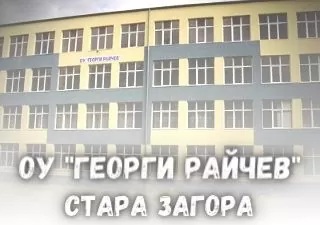STEM lesson in Technology and Entrepreneurship
Institution
Georgi Raichev Primary School Stara Zagora
Institution Typology
School
Country
Bulgaria
Stakeholders involved
Mariana Boyadzhieva - teacher
Summary
The STEM lesson is about Technology and Entrepreneurship and includes elements from Man and Nature, Mathematics and Information Technology.
The lesson can be presented to both 3rd-grade students and those working with older students. Depending on the needs and wishes of the class, the idea can be adapted and executed accordingly.
For the work in the lesson, students are divided into small work teams and take on the role of engineers, architects or builders to create strong and durable structures.
CONTEXT AND OBJECTIVES
Problem addressed or learning needs
With the help of this STEM experiment, students will learn:
● To implement a project in a team, using technical skills to make the structure;
● To form creative skills and creative thinking at work;
● To cultivate a positive attitude towards technology and its role in people's lives;
● To participate in practical activities that enrich students' learning.
Types of enhanced competences
No coding activities were used here.
METHODS, STRATEGIES AND TOOLS
Subjects involved
Technologies\Engineering, Math, Civic education
Duration and timeline of implementation
1 class hour for the activity
• Teacher preparation;
• Presentation preparation.
• Pre-prepared structure and materials.
Strategies and activities
The lesson begins with a presentation that shows the different types of structures, guiding and motivating students for the upcoming activities from the perspective of different fields of science and uniting knowledge from different areas of life in a common theme.
Through various questions on the topic, children are guided to observe, investigate and experiment in order to reach most of the conclusions about the strength of the structures, their durability and shape.
The students in the class are divided into four groups in advance, which have specific tasks to perform, and each team will make structures with a different base: team 1 - with a square base; team 2 - with a rectangle base; team 3 - with a triangle base; team 4 - with a circle base; They use straws, sticks and plasticine.
This is followed by the stage of making the structure, and all teams will use their ingenuity, technical skills and creativity to prepare the project.
Material Sources
Projector, Laptop, Using the Presentation "Constructions"
Methodology
Team Work, Learning By Doing
IMPACT AND RESULTS
Impact
n. of students involved - 1 class
n. of teachers involved - 1
n. of schools involved - 1
Observed Benefits
No benefits were reported.
Challenges Faced
No challenged were reported.
LESSONS LEARNT AND RECOMMENDATIONS
Key Success Factors
Dividing the children into teams made it possible to implement the four principles that STEM encompasses and have been identified as key in 21st century education: creativity, collaboration, critical thinking, and communication.
While completing their task, the participants in each group were extremely focused, motivated, and helped and supported each other.
The students distributed their duties and gave each other ideas on how to make their constructions.
Future Improvements
In the lesson, the teacher can combine physical models with virtual ones using 3D design tools or simulations. This activity can be implemented in other subjects, such as history, where students can build pyramids or castles.
After building their physical structure, students can use coding platforms like Scratch or Tinkercad with Codeblocks to simulate how their structure holds weight.
An animation showing how the shape affects stability can also be coded.
The teacher can introduce digital journals or tablets for students to document hypotheses, observations, and results. This inquiry-based approach can be used in lessons about the human body, ecosystems, or energy flow.
By using Scratch or MakeCode, children (with the help of a teacher) can create mini-games or quizzes based on the structure principles (e.g., a drag-and-drop activity to match structure types with their properties).
The teacher can explain and map more explicitly how maths (shapes, measurements), nature (materials), and tech (tools) connect. This could be replicated in thematic units like “Smart Cities”, “Space Missions”, or “Rescue Robots”. In addition, interactive diagrams or simulations in Scratch could be created, where clicking on different shapes triggers explanations or mini-challenges (e.g., “Why are triangles used in bridges?”).
Recommendations
1. As the project is only physical, adding a digital part can make it more attractive and deepen understanding. Coding platforms like Scratch can be used.
2. If we want the project to be accepted and relevant to all participants, it has to be related to a real-life problem or situation. For example: “Design a shelter that can survive a natural disaster”
3. Students can keep STEM journals (paper or digital) where they can document their hypothesis and building process or reflect on what worked or didn’t.
4. A storytelling or design element can be added—for example, students create a backstory for their structure or design a logo and presentation. This will foster creativity, integrate with language and arts, and give more ownership.

